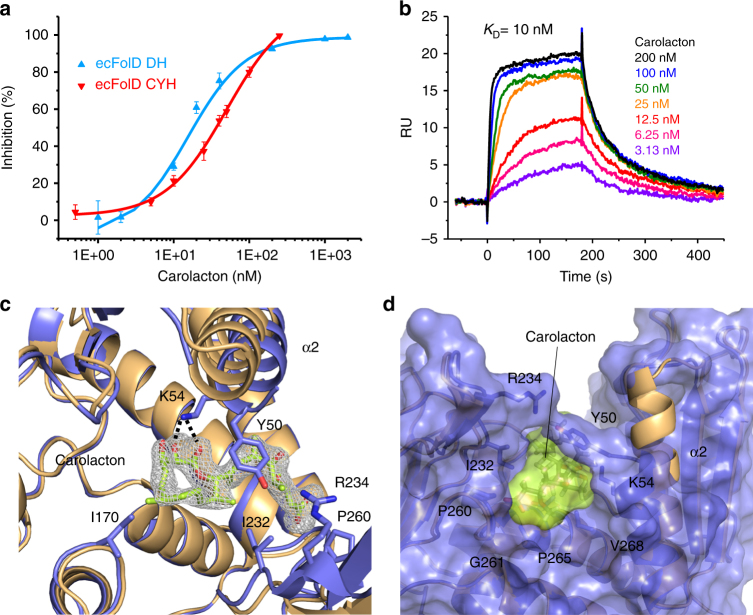Fig. 2.
Carolacton is a potent and tightly binding inhibitor of FolD. a IC50 determination for carolacton against DH and CYH activities of ecFolD. Data are presented as means ± s.e.m of three independent replicates. IC50s were obtained via logistic dose–response fitting. The one-way ANOVA test was used for statistical analysis, P < 0.01. b SPR analysis of carolacton binding to ecFolD, RU resonance units. Carolacton shows strong binding to ecFolD. The estimated K D was obtained by fitting the association and dissociation signals with a 1:1 interacton model using the Biacore X100 Evaluation Software. c Top view of the FolD–carolacton complex structure. Cartoon representations of apo-FolD (gold) and FolD in complex with carolacton (blue, lime) are superposed to show the movement and partial dissolution of helix α2. Residues involved in carolacton binding are shown as sticks. The difference electron density (F o−F c) contoured to 3σ with phases calculated from a model that was refined in the absence of carolacton is shown as a grey isomesh. d Surface representation of FolD bound to carolacton, side-view. Colours correspond to c. Partial dissolution of helix α2 as a result of the interaction of Y50, which forms a lid on carolacton that is further stabilized by R234, can be seen

